Working German Shepherds
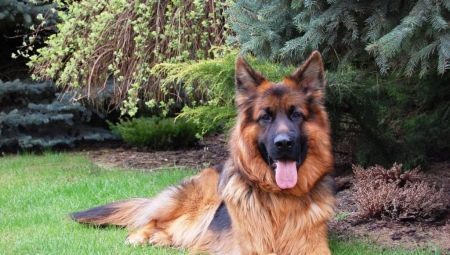
Since ancient times, German shepherds have been human companions: they guarded the home and grazed cattle, were faithful helpers. The recognizable appearance and character of the breed made them very popular with breeders.
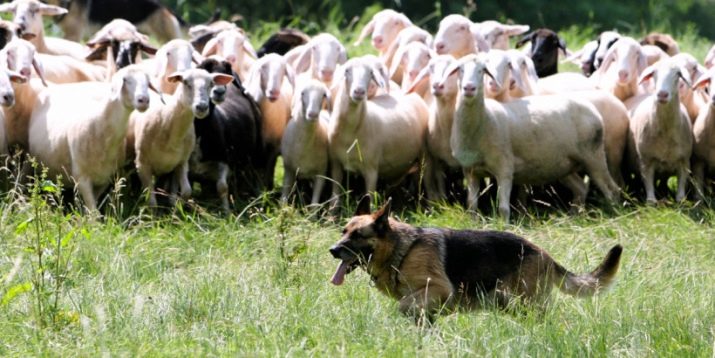
Today German Shepherd puppies are in demand in the military, anti-terrorist and security areas.
Origin story
Back in the XII century, there were dogs that outwardly resemble today's German shepherds. They possessed high devotion to the owner, hard work, distrust of outsiders and moderate malice. They were used as shepherds and home guards.

The progenitors of working shepherd dogs, who proposed the breed standard that is still used today, were Max von Stefanitz with his friend Arthur Meyer. Stefanitz had a great love for animals: having refused military service, he preferred to breed dogs. In addition, Max dreamed of someday developing a dog breed that could be used for official purposes and possessed strength, courage, endurance, intelligence and devotion.
In the spring of 1899, at one of the dog shows, Stefanitz acquired a new pet.
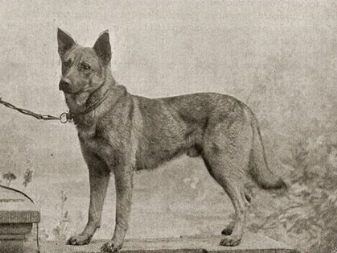
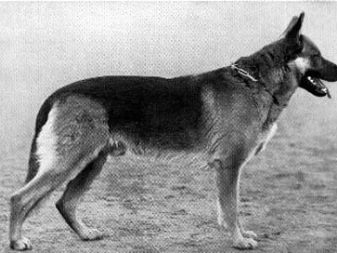
It was a large reddish-gray male with a powerful body and well-developed muscles, proportional body structure and balanced psyche. The dog was entered in the stud book of the breed as a standard for subsequent successors of the working species.
A few weeks later, the German Shepherd Club was founded (still in existence today) with annual exhibitions.
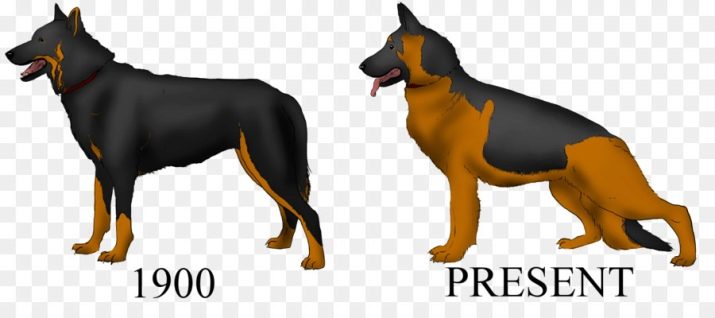
Here Max was able to select ideal candidates for mating and breeding a pure breed that meets working standards.He was not worried about the external data of the animal, but his physiology and character traits.
Breed standards
Adults are usually of medium height. Males are not more than 63 cm at the withers, and females - no more than 55-63 cm. The weight of a healthy dog for males is not more than 42 kg, for bitches - 32. These standards are based on the fact that a service dog must react with lightning speed to the current situation, be quick and agile in its actions. The body is elongated, 10-15% longer than the length of the individual at the withers, with well-defined muscles.
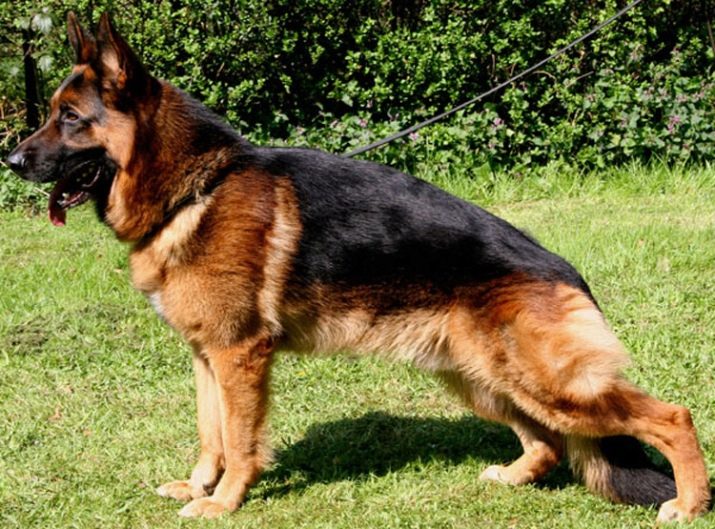
In a German Shepherd, the head should be wedge-shaped - it is a slightly widened, prominent forehead, which gradually tapers towards the tip of the nose (only a black lobe is acceptable). Ears are straight, erect and turned forward. Dogs of this breed should have well developed jaws with a scissor bite. The teeth are straight, without obvious defects. The eyes are almond-shaped, close-set, golden amber to dark brown in color acceptable.

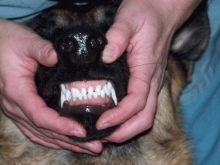

The neck area should be well developed, with pronounced muscles, and smoothly move to the withers, forming a kind of slope. Paws are strong and muscular. The front legs should be straight and straight, the hind legs are usually slightly set back, strong muscles are present to ensure quick reaction and running.
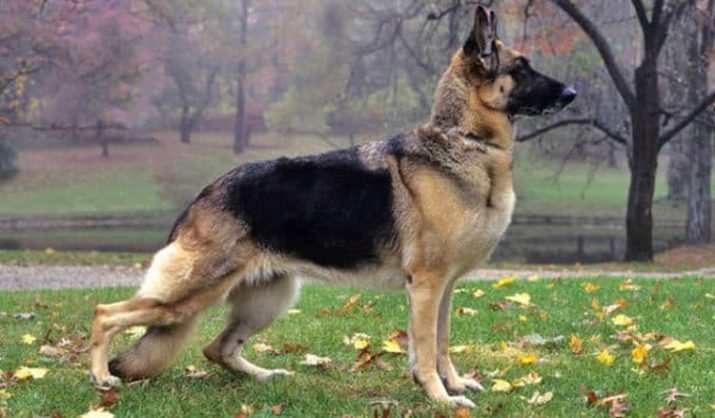
A feature of the working German shepherd dog is its color - black-and-back color, that is, the presence of a darkened area on the back and sides with tan, red, black or yellow shades. The muzzle is always black.
Individuals with zonal and completely black color are less common.
How to choose?
Having come to the breeder to select a puppy, you need to inspect the entire litter, highlighting the baby you like.
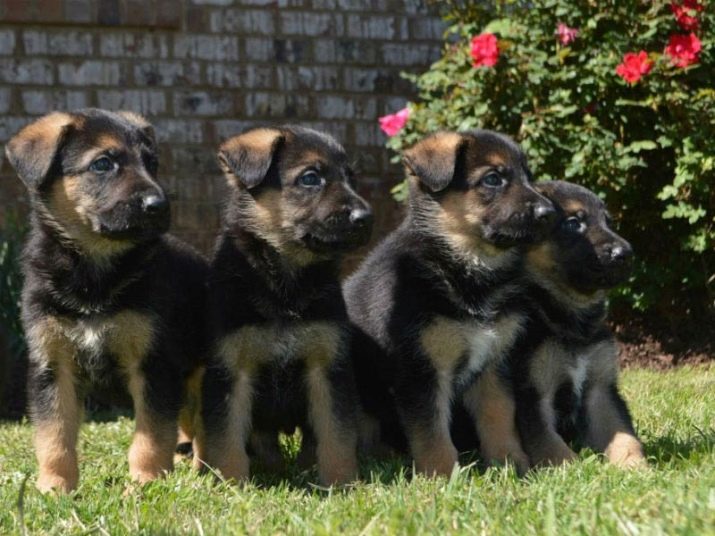
In order not to be mistaken with the choice, you should pay attention to the following aspects.
- The puppy should have moderate fatness (the main thing is that the belly is not swollen), shiny fur, pink slimy, lively and bright eyes. When probing, the pet's body is elastic, with strong bones, slightly elongated, with a straight back and a long neck.
- The puppy should have wide and massive paws (the presence of dewclaws on the hind legs is considered a defect) with black pads and claws. The tail should be free of any bumps or kinks.
- The puppy's muzzle is not sharp, with a pronounced transition from the forehead. Up to 3.5 months, the tips of the ears should not be straight. The presence of straight ends indicates problems with phosphorus-potassium metabolism and the presence of skeletal ossification.
- The puppy's eyes are dark brown. You should refuse to purchase puppies with light eyes or heterochromia.
- A working shepherd puppy must have the correct bite - a scissor bite. Or, the gap between the teeth is not more than 1-2 mm. The teeth must be straight and free from defects (fused or doubled teeth).
- Attention should be paid to the state of health of the mother of the puppies. The absence of receding hairline, discharge from the eyes and a cracked nose is an important indicator that the pet will be healthy.
- Healthy puppies are generally mobile, energetic, and inquisitive. They should not have any signs of developmental defects: birth and / or postpartum trauma, rickets.
- A swollen belly and faded dull coat indicate the presence of parasites in the baby.
- Very carefully it is required to examine the eyes and ears of the puppy. The eyes should be clear and wide open, without any discharge. The ears should also be clean and free from foreign odors. Its presence may indicate otitis media. In such a situation, the animal will be aggressive and restless, shaking its head and trying to comb its ear.
- You should understand what kind of character the puppy has. To do this, it is enough to observe how he behaves with other kids and what is his attitude towards the world around him and strangers.
- The pedigrees of the mother and father of the puppies are also important considerations when choosing a pure litter puppy.
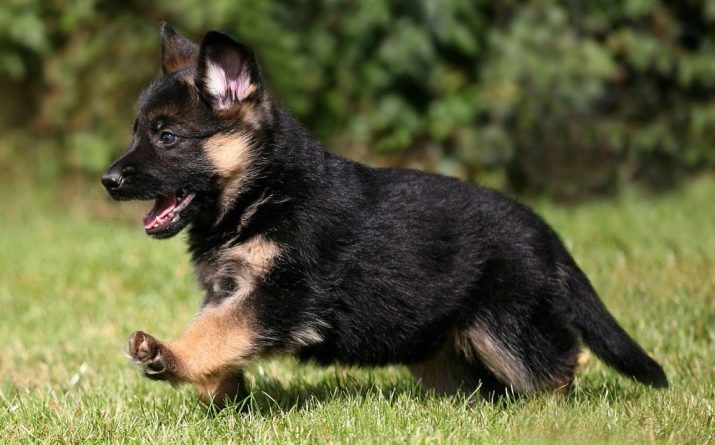
Anyway, if the puppy is shy and avoids contact, or is too embittered and aggressive, it is better to find another pet.
Suitable candidates for the role of a service dog are active, curious, courageous, healthy and breed-standard puppies.
When choosing a working German shepherd breed, you need to remember that a pet, in addition to positive qualities such as endurance, loyalty, unpretentious care and feeding, will require a lot of attention and time for training and proper education.

The future owner must be active and disciplined, possess sufficient physical strength.
Care rules
As mentioned above, German Shepherds are unpretentious in care.
For the healthy development and comfort of the dog, it is best to keep it in an enclosure in close proximity to the duty station.
When placing an animal in an apartment, frequent and long walks with intense training and teamwork will be necessary. You will also need regular combing of the coat, cleaning the eyes, teeth and ears, and preventive visits to the veterinarian are also important.
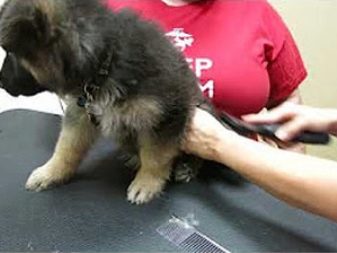
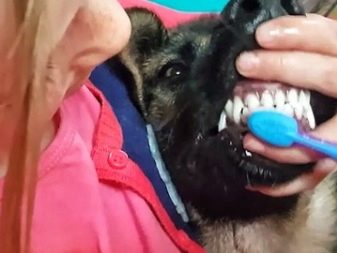
With regard to feeding, due to the high activity of the animal, the diet should contain a sufficient amount of protein (about 50% of the daily food intake). A variety of cereals, herbs and dairy products are also necessary for the health of the pet. Avoid fatty meats, smoked meats, sweet, salty and spicy foods.


Shepherd puppies are fed more often (from 3-4 times a day to 6), for adults, two meals a day are enough.
How to raise a puppy?
According to foreign cynologists and dog breeders, weaning a puppy from its mother is best done after reaching 2 months. By this time, he will get stronger, the psyche and basic character traits will be formed.



For the correct development and health of the puppy, you should adhere to the following rules.
- Determine when to feed.
- Do not scold or punish for the fact that the puppy went to the toilet in the wrong place. You just need to walk him more often, and praise him for putting up with it and going to the toilet on time.
- Collar train your baby.
- From the age of 4 months, you should start teaching commands (the first and most important command is “to me”), referring to the puppy by name.
- Avoid visiting too noisy places at first.
- When making undesirable actions by the puppy, say "no", raising your voice slightly. So he will understand that they are unhappy with him.
- Acquaintance with other people and animals should be gentle in order to form an adequate relationship with society.
- The puppy should be bathed only when necessary, with special shampoos (frequent bathing can harm the animal).
- When buying puppies in the spring, you need to provide them with good nutrition and frequent walks, while autumn babies need an additional intake of vitamin D.
When purchasing a working breeding German shepherd, you should pay attention not to the external data of the pet, but to their working qualities.
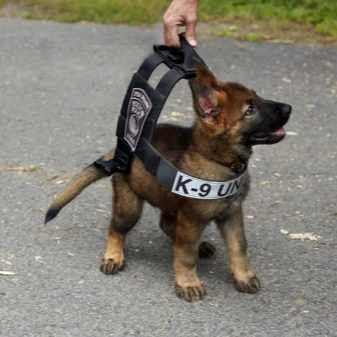
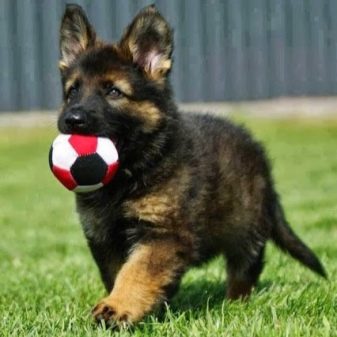
Such dogs have good stamina and the ability to work in the most difficult conditions. You should not acquire such dogs for the role of a companion, because they require great physical exertion, strict discipline and proper education from an early age.
More visual and detailed information about working breeding German shepherds can be obtained from the video.






































